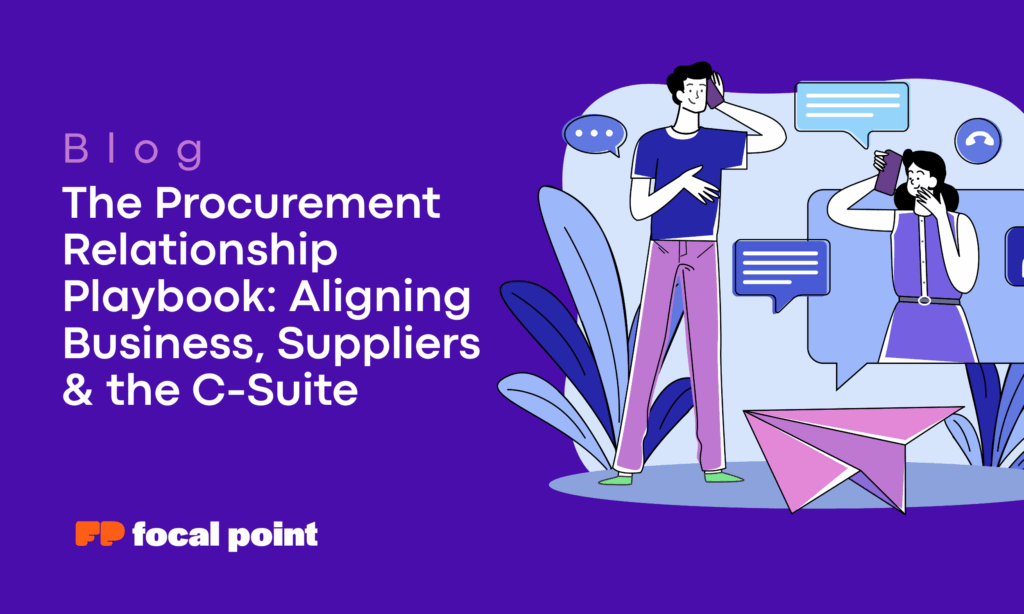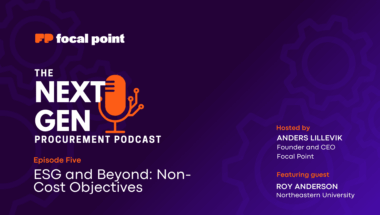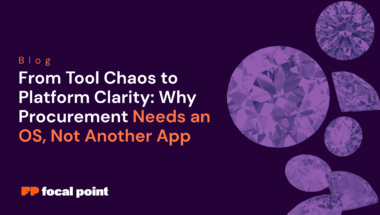If procurement is a team sport, communication is the playbook. The fastest way to unlock value is to get people aligned: business users who need outcomes, suppliers who can innovate, and executives who expect predictable results. Here’s a practical guide to managing those relationships so work moves faster, risk drops, and procurement’s impact is unmistakable.
1) Treat business users like customers (because they are)
Lead with listening. Spend the first 20–30 minutes of any kickoff hearing your stakeholder’s world: goals, deadlines, “gotchas,” success metrics. Two prompts that never fail:
- “Walk me through a day-in-the-life for you and the team on this.”
- “If we could only optimize for one thing—speed, quality, innovation, or cost—which wins and why?”
Align on outcomes, not activities. Many stakeholders care more about throughput—speed to value, supplier capabilities, resiliency—than the last 2% of price. Make that explicit so you can source to the real requirement (e.g., “double delivery pace” vs. “lowest unit rate”).
Make timelines honest. Shift the conversation from “fastest possible” to “on-time” delivery. Complex first-time contracts (new supplier, novel IP, heavy indemnities) can take months. Start earlier, sequence approvals, and publish a simple milestone plan everyone can track.
Micro-framework: L.E.A.P.
- Listen to the business context.
- Empathize with pressures and constraints.
- Align on the primary outcome and tradeoffs.
- Plan the path: stakeholders, risks, dates, decisions.
2) Orchestrate cross-functional partners without the blame game
Legal, InfoSec, IT, Finance, Audit—these teams shape outcomes, yet often sit outside procurement. Bring them into the process by design.
Create a two-way charter. Co-author a one-pager with each partner:
- What they need from procurement (minimum docs, data, lead times).
- What procurement needs from them (SLA by risk tier, escalation path).
- How exceptions work (who approves, how fast).
Make the work visible. Track cycle time by stage, not just “overall.” When queues and handoffs are transparent, you can fix bottlenecks without finger-pointing (e.g., “security review needs a data-flow diagram earlier” → update intake to include it).
Start early or pay later. Friday request + Monday start = bad contract. Protect quality by scheduling reviews in advance for known high-complexity deals.
Modernize legacy policy. Many policies were written for a paper era. Review and simplify routinely so digital workflows (and AI assistance) aren’t tripped by outdated rules.
Be the shield. A huge value prop for business users: procurement handles legal/finance/audit on their behalf (within policy) so teams can focus on delivery.
3) Activate suppliers as a source of innovation (not just cost)
Curate access. Don’t flood stakeholders with vendor meetings. Pick the few suppliers most likely to add value and set the right cadence (e.g., 20-minute quarterly roadmaps, semiannual demos, or quick spec reviews).
Ask better questions. “What have peers implemented that we haven’t?” uncovers proven ideas with faster payback than greenfield experiments.
Shift work where it’s efficient. If a supplier can operate a process or host a tool more effectively, negotiate it in. You lower internal costs and raise service levels—and you keep a single throat to choke.
Institutionalize innovation. Add a standing “Innovation & Lessons Learned” section to QBRs with two artifacts:
- A rolling backlog of vetted supplier ideas.
- Before/after metrics for anything adopted.
4) Communicate value beyond savings
Savings matter, but they’re not the whole story. Tell the total value story in plain language, monthly:
Business impact metrics
- Cycle time: intake → PO/contract by risk tier
- Speed to value: time to first deliverable/use
- Risk & compliance: % reviews completed on time, exception rate
- Working capital: payment-term realization, DPO improvements
- Supplier performance: OTIF, quality escapes, incident MTTR
- Together these show reliability (OTIF), quality (escapes), and responsiveness (MTTR), a clean snapshot of supplier performance beyond just price.
- Resilience & diversity: dual-sourcing coverage, diverse-supplier mix
- Experience: post-engagement Net Promoter Score sent immediately after each interaction (real-time feedback beats annual surveys)
Simple scorecard example
- “From April–June, median contract cycle for Tier-2 deals fell from 45 to 28 days (-38%). Payment-term adherence improved 14 points, adding ~$3.2M in free cash. Post-engagement NPS averaged 72 across 186 responses. Two supplier-led changes lifted delivery throughput 22% on our highest-volume line.”
That’s the kind of update the C-suite reads and remembers.
5) Earning investment from the C-suite
Budgets are tight. Here’s how to fund what matters without waiting for a miracle.
Self-fund smartly.
- Rebalance budget toward tech and training; upskill a leaner team to do higher-leverage work.
- Refresh job descriptions for modern skills (data literacy, supplier development, change leadership) so comp bands match reality.
Land a flagship win.
- Target one high-spend agreement for a thoughtful renegotiation that emphasizes service levels and resilience, not just price. Publicize the outcome to build momentum.
Unlock working capital.
- Enforce actual payment terms (stop paying “ASAP” by habit).
- Expand terms where appropriate and monitor adherence, then report the cash benefit.
Consolidate adjacent tools.
- Reduce overlap across CLM, third-party risk, intake, and sourcing. One platform + clear workflow often beats three semi-utilized systems. Focal Point is designed to do this.
Leverage the moment.
- When a supplier fails or a control gap appears, use it to justify preventative investment. “$500k now avoids a $10M risk later” is a compelling equation.
6) Cadence & rituals that keep everyone aligned
- Intake clarity: one form that captures scope, outcome priority, risk hints, desired start date.
- Weekly flow review: procurement + legal + InfoSec triage top blockers with decisions, not just status.
- Tiered SLAs: by risk/complexity, with published turnaround targets and an escalation ladder.
- Quarterly business reviews: combine supplier performance, innovation backlog, and value scorecard.
- Real-time NPS: 1-question pulse after each engagement; close the loop with detractors within 48 hours.
Steal-this checklist
- Start every new request with 20–30 minutes of listening.
- Agree on one primary outcome (speed, quality, innovation, or cost).
- Publish a milestone plan with realistic lead times.
- Co-create charters and SLAs with Legal/IT/InfoSec/Audit.
- Track stage-level cycle times and fix the longest queue first.
- Curate supplier meetings; ask for peer-proven ideas.
- Scorecard more than savings: include cash, risk, time, and NPS.
- Rebalance budget toward tech/training; modernize roles.
- Use a flagship renegotiation to fund improvements.
- Don’t waste a crisis—turn it into a mandate for resilience.
Bottom line: When procurement manages relationships with intention, the politics get easier and the outcomes get better. Listen first, make the work visible, communicate total value, and invest where it multiplies results. That’s how you become the team everyone wants to work with, and the function leadership can’t live without.
Learn more about how the right procurement operating system can support communication efforts. Talk to Focal Point today.



